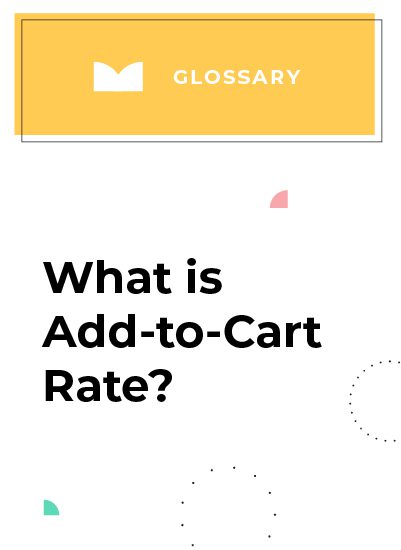
Add-to-Cart Rate
What are Add-to-Cart Rates?
The add-to-cart rate is the percentage of visitors who place at least one item in their cart during the session. Add-to-cart rates are important to track, since they can tell you about the success of your product selection, marketing efforts and site usability. Additionally, since about 30-40% of users who add an item to their cart, complete a purchase, improving these rates could mean a significant increase in revenue for your business.
Calculating Your Add-to-Cart Rate
To calculate your add-to-cart rate, consider the following formula:
Calculation: (Sessions with cart item viewed) / (total sessions)
Average Add-to-Cart Rates
Understanding the average add-to-cart rates is a good first step in creating benchmarks for your business. Below are some statistics taken from our quarterly report to help you measure yourself against the industry.
Global Add-to-Cart Rates
Add-to-cart rates are between 9%-11% globally. Great Britain saw higher add-to-cart rates last year, suggesting that there is some growth opportunities especially for US companies. Average page views in Great Britain are higher than in the US, suggesting missed opportunities for engagement or usability for American companies.
Additionally, according to Salesforce, what you sell could have an influence on your add-to-cart rates. Luxury brands tend to see lower add-to-cart rates, while health & beauty sites tend to have higher rates.
Add-to-Cart Rates by Device
Smartphone add-to-cart rates are lower than other platforms such as desktop and tablets. By optimizing for mobile, marketers can improve conversions and increase the bottom line for their companies.
What You Can Learn from Add-To-Cart Rates
If your add-to-cart rates are lower than the industry average (between 9-11%), there are opportunities to further improve them to increase revenue. Consider evaluating the following if trying to improve add-to-cart rates.
Products
A good selection of products is a key driver in convincing consumers to make a purchase. Consider the following steps when evaluating if your product is the problem:
The Market
Is there a market for the product you are trying to sell? Trying to sell an app to a demographic that isn’t technologically savvy is an uphill battle that you may not want to fight. Doing your market research and letting these insights inform the product can help your company make better decisions. And don’t be afraid to pivot the direction of your marketing or products a dating site, but no videos were uploaded. Letting the market help mold the product helped pilot YouTube’s success
Product Pricing
How does your product compare in terms of quality and pricing? According to Dan Ariely’s book, Predictably Irrational, people are anchored to prices based on prior experiences. When evaluating the pricing of your product, people will bring their biases with them about how much a product should cost. The only way to circumvent this is to offer something different than those in your industry (For example: Howard Schultz created a luxury coffee brand through Starbucks, modeling his stores on European cafes). Consider what brands your clients may be comparing you to and model your pricing accordingly.
User Experience
User experience is also an important driver of add-to-cart rates. Better websites drive better conversions. Consider the following:
Mobile Optimizations
Not prioritizing the mobile experience could be putting your site in jeopardy. Since 79% of mobile users have made a purchase on their mobile phones in the past month, improving your mobile site is imperative.
Discoverability
Your site needs to be organized. Making it clear to users where they can find the products they are looking for is a good step to improving add-to-cart rates.

Improving Your Add-to Cart Rates
1. Product Recommendations
When product recommendations really hit the mark, they drive phenomenal value: customers who add recommended products to their carts and/or purchase in the initial session tend to purchase significantly more items and have 33% higher average order values. Product recommendations are a great way to improve engagement rates and add-to-cart rates.
2. Website Personalization
Showing your customers that you understand them and know who they are can drive more conversions. By taking into account their past purchases and location, you can personalize the experience to deliver relevant results. If a potential customer is located in the northern United States, showcasing your winter apparel as opposed to clothes for warmer parts of the country can go along way. Understanding if your customers root for the Red Sox or Yankees can also go a long way if you are a store trying to sell sports apparel.
3. Optimize for the Device
Again, consider the devices and design your website experiences accordingly. Blanket responsive design is not enough. Designing a site for web and designing a site for mobile need to consider different user experiences. Are the images optimized to load faster for mobile? Are the forms shorter? Does the navigation correlate with how your mobile users are experiencing the site?